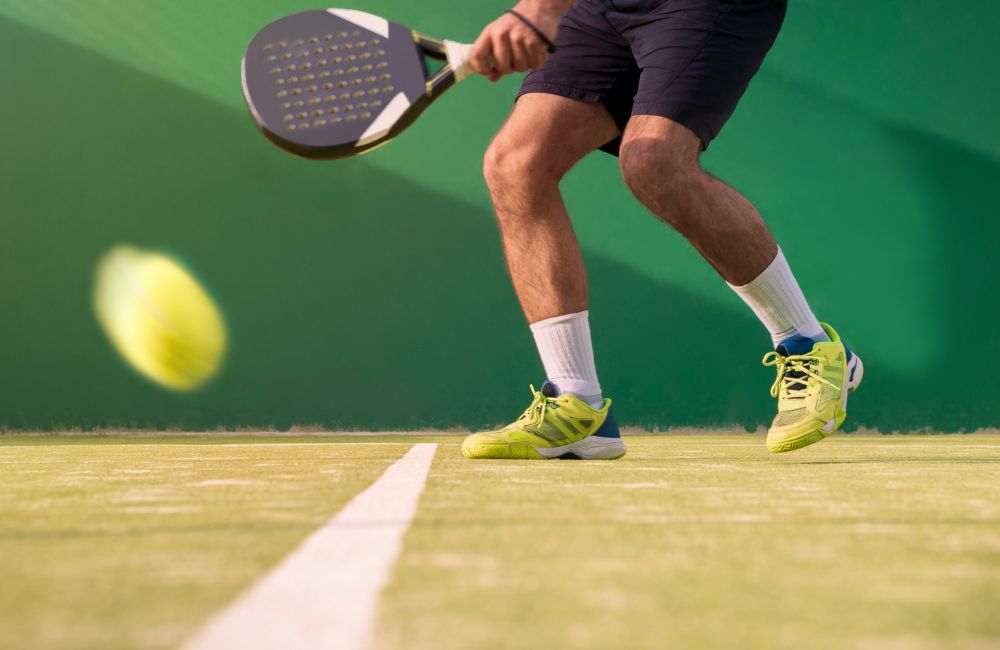
A near-perfect workout, according to science!
If you’re reading this article, you’re probably looking for ways to get in shape and improve your cardiovascular health. To this end, you should strongly consider engaging in low-impact HIIT training.
Low-impact HIIT training is one of the best ways to improve health while minimizing joint stress. Best of all, you can achieve the benefits of this type of workout through fun activities such as pickleball!
You may also like:
7 Exercises That Will Transform Your Whole Body in Just 4 Weeks
10 Unique Stretching Exercises To Make You as Flexible as a Cat in 4 Short Weeks
What Is Low-Impact HIIT Training?

HIIT stands for High-Intensity Interval Training. In general, this type of exercise involves:
- Taking the body to its max for a short, defined interval.
- Then, performing very low-intensity exercise for a brief period.
- Repeating this pattern for the entirety of the workout.
Usually, people associate this type of training with very high-impact movements, such as sprinting. However, this doesn’t always have to be the case.
Instead, HIIT training can be performed in a low-impact manner. This can be accomplished through the use of an exercise bike, elliptical, or through other methods.
In fact, as was mentioned in the introduction, racquet sports provide an excellent way to achieve some low-impact HIIT training.
Why Racquet Sports?

Racquet sports are essentially set up as high-intensity interval exercise sessions.
If you think about it, all racquet sports involve short bursts of very high-energy movements, followed by a period of rest. Naturally, there are other non-racket sports that follow this same pattern as well. One such sport is volleyball.
The cardiovascular benefits racquet sports provide are many. But there are also musculoskeletal improvements seen in these athletes.
Swinging a racket requires strength and coordination from nearly every muscle in the body. Specifically, muscles of the trunk, arms, legs, and other body regions all work together to enable the perfect swing.
So, as we can see, racquet sports naturally allow for a HIIT-type workout. Furthermore, they help us improve strength and coordination throughout the body.
But how can we overcome the high-impact forces inherent in sports such as tennis? Fortunately, we can instead participate in activities such as badminton, pickleball, and others.
Each of these provides us with all of the positive aspects of the sport, with a few of the negative impacts.
Racquet Sports for Low-Impact HIIT Exercise
Sports like tennis are excellent for improving cardiovascular, muscular, and even bone health. However, many people may be concerned about the high-impact forces experienced during a tennis match.
For this reason, many people have begun to participate in racquet sports such as pickleball and ping-pong. These activities provide many of the same benefits as tennis, without the high-impact downsides.
Better yet, these games can be very fun for participants!
METs and Exercise
The metabolic equivalent, or MET level, is one way to measure the intensity of an exercise. Essentially, this system works by comparing activities to sitting and resting, which is rated as one MET.
Therefore, something that is rated as two METs requires twice as much energy as sitting and resting. Furthermore, something rated as three METs is thrice as hard, etc.
Some examples of MET levels experienced during exercise include:
- Walking: 4.0 METs
- Jogging: 9.7 METs
- Tennis: 4.0-6.0 METs
- Badminton: 5.5 METs
- Pickleball: 4.0 METs
As you can see, pickleball and badminton provide similar MET levels to a tennis match. Also, these activities use many of the same muscles used during tennis.
Therefore, if you want to reap the rewards inherent in tennis and HIIT exercise, grab your favorite racket and get out there!
Works Cited
- Ito S. (2019). High-intensity interval training for health benefits and care of cardiac diseases – The key to an efficient exercise protocol. World journal of cardiology, 11(7), 171–188. https://doi.org/10.4330/wjc.v11.i7.171
- Mendes, M. A., da Silva, I., Ramires, V., Reichert, F., Martins, R., Ferreira, R., & Tomasi, E. (2018). Metabolic equivalent of task (METs) thresholds as an indicator of physical activity intensity. PloS one, 13(7), e0200701. https://doi.org/10.1371/journal.pone.0200701


